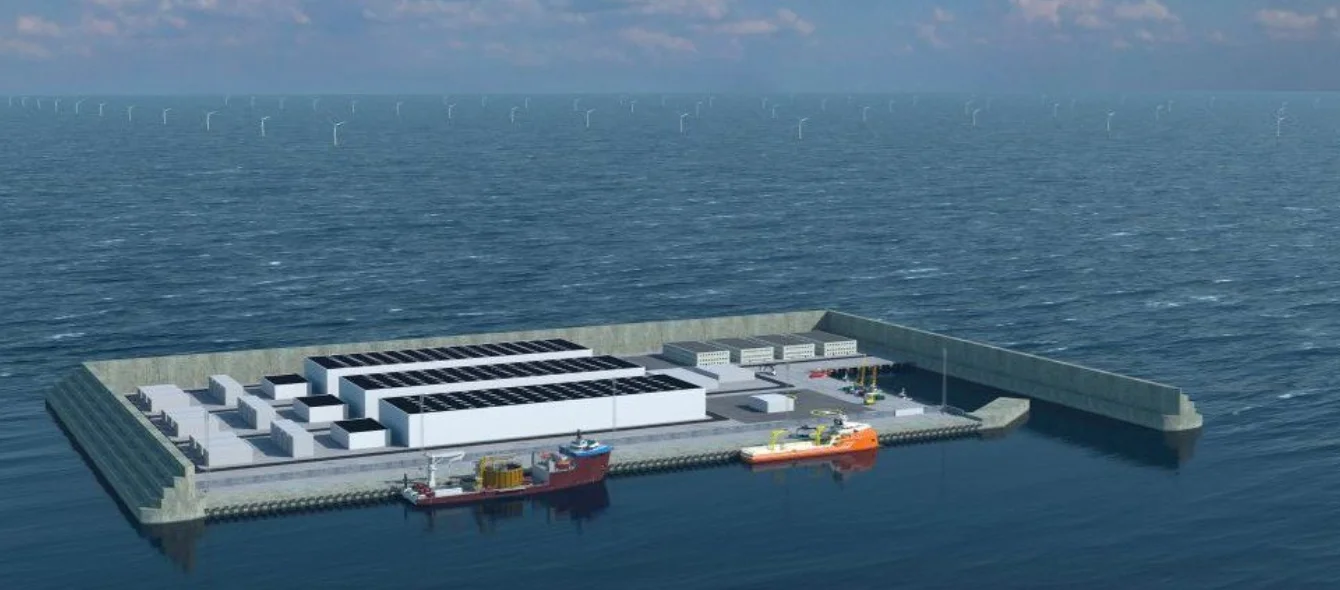Towards the end of 2019, the Danish government made headlines thanks to a set of notably ambitious plans: its parliament voted in favour of the construction of the ‘North Sea Wind Power Hub’ – a renewable energy project like no other. A wind farm with a capacity of up to ten gigawatts (GW) is to be erected on a sprawling artificially constructed island, spanning an area the size of 18 football fields. Located just 80 kilometres off the west coast of the country, the island will boast a capacity equal to almost half the 22 GW of offshore capacity currently installed in the EU. This means it could generate more electricity than is consumed by the entire population of Denmark. The only thing the 34-billion-euro project was missing was an investor, as – initially – the plan was for companies to bear 90 percent of the costs.
With the landmark decision however, the Danish state will now take on the investment together with private financiers. Half the investment costs will be covered by taxpayers’ money, meaning the state will own the majority of the island. The Danish Energy Ministry has already set its sights on a start date: the island is to generate power from 2033 onwards, at which point no less than 200 wind turbines with a total capacity of up to three GW will be harvesting wind on site. To meet these targets, these turbines would have to have a capacity of 15 megawatts (MW). Although conventional models are not yet powerful enough, manufacturers including Siemens Gamesa and Vestas have announced that they are developing prototypes boasting capacities of 14 MW and above.
However, the artificial island will not be the only new venture helping Denmark reach its target of becoming carbon-neutral. The government is also planning a wind farm on the island of Bornholm. Both hubs together are initially to have a capacity of five GW, i.e. three times the country’s current offshore capacity. When the ‘North Sea Wind Power Hub’ reaches its final stage of construction, combined capacity will increase to as much as 12 GW – theoretically enough to supply 12 million households with electricity.
Interconnectors link energy hubs to transmission grids
Since the population of Denmark is only six million strong, this frees up some of the energy to be used elsewhere. Using on-site electrolysers, the artificial island is also to produce green hydrogen with this surplus power. A portion of the electricity is also pencilled for export, bound for Germany and the UK, among others. Plans for the necessary infrastructure are already under way. The first hybrid interconnector was installed in the Baltic Sea in October 2020, connecting German offshore wind farms Baltic 1 and 2 to Denmark’s Kriegers Flak, which is currently under construction. The island of Bornholm will one day also be connected to different transmission grids using this same technology.
Danish Climate Minister Dan Jørgensen heralded the beginning of a new era for sustainable energy: “Last year, Denmark set a cut-off date for fossil fuel extraction. Today, we are taking a decisive step toward a clean energy future. The Energy Centre in the North Sea will be the largest construction project in Danish history. It will significantly contribute to harnessing the enormous potential of European offshore wind, and I welcome the opportunity for collaboration with other European countries.”
Photo credit: © Danish Energy Agency
